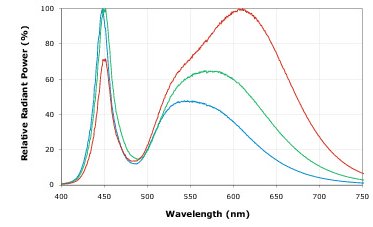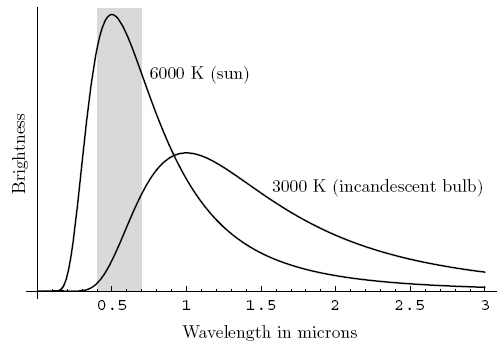
I have been concerned for some time about the irregular spectral output of white LED light sources. Here is the spectral output of the Cree XP-G emitter from the Cree Datasheet. The blue line is the "cool-white", the green light is the "neutral", and the red line is the "warm-white". Not that these are relative intensities, normalized to the brightest part of each spectrum, so intensities should not be compared between green and red for example.

Note that this light has a substantial notch in the cyan (light blue near green, 480nm region). The reason for this is that the lights are actually a composite of two light sources: A blue (450nm) narrow emission that actually arises from the diode, and a broad green-yellow-red hump that is produced by a phosphor which is being activated by the "native" blue emission. The two of these are balanced in power to produce a pretty good white light, albeit with the aforementioned cyan notch.
Just for reference, here is an image showing the wavelenghts corresponding to colors in the visual:

For comparison, here are the spectra of two light sources commonly used for photography (from Cornell University).
Here is a tungsten (incandescent) light (General Electric GE Super Soft and Soft White)):

The above spectrum shows relative brightness throughout the visual region, within which brightness increases monotonically as we move to the red. The following spectrum shows what is going on over a wider spectral region, with the visual range shown in grey.

Here is the spectrum of a Nikon SB-16 electronic flash:

Tom's pages / tom@mmto.org